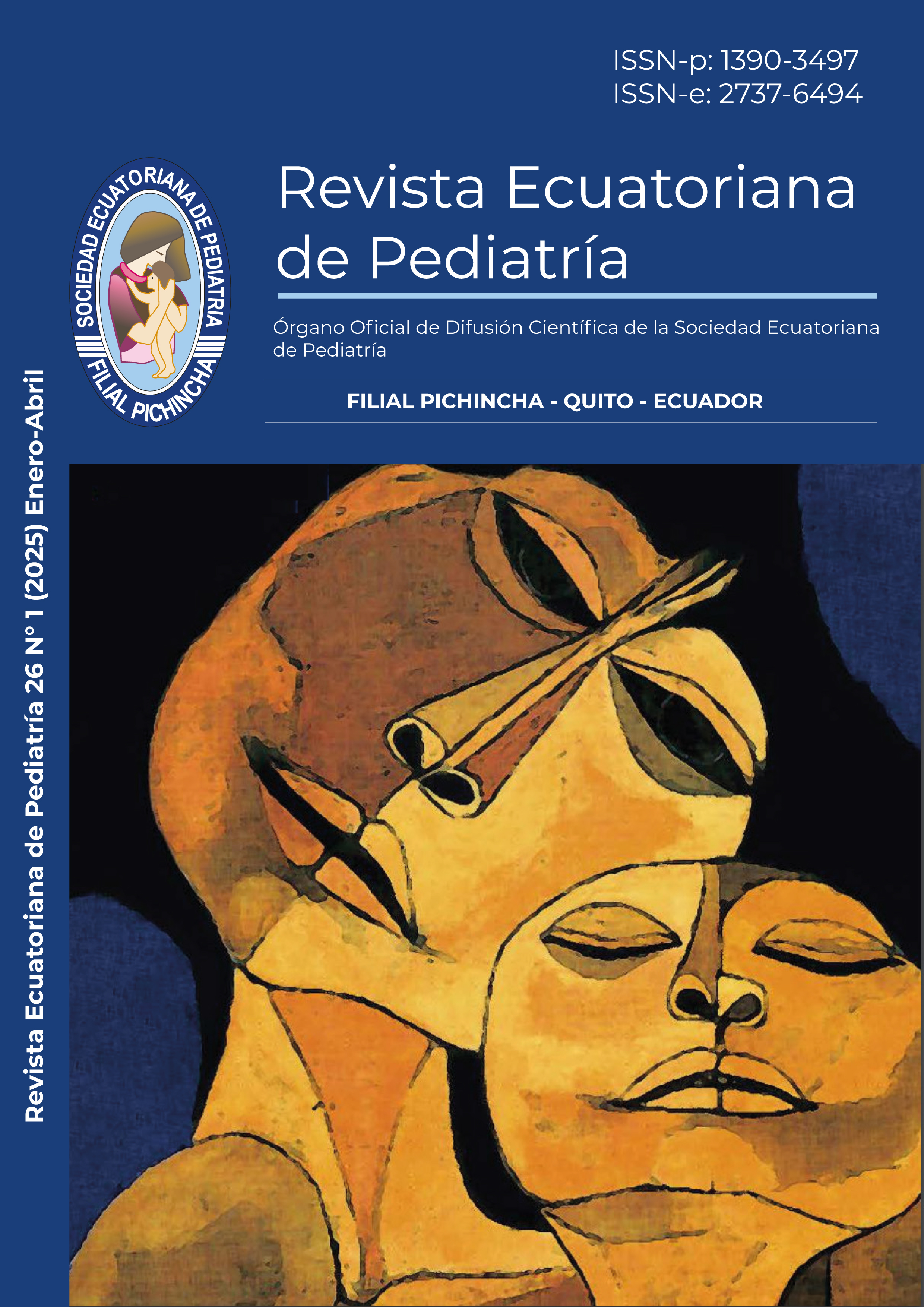Flexural Strength of Photopolymerizable Resins for 3D Printers and PMMA-Based Resins. An In Vitro Study
Main Article Content
Abstract
Flexural strength is a key factor in the selection of provisional dental materials, as it directly influences their clinical performance. The objective of this study was to evaluate the flexural strength of light- curable resins for 3D printers and PMMA-based resins. Methodology: Two experimental groups of 10 samples each were formed: Group A (PMMA resins) and Group B (3D printing resins). The samples in Group A were fabricated using a condensation silicone matrix and a flask, following the manufacturer’s instructions. The samples in Group B were designed using Meshmixer software and arranged in Photon Workshop 6.4 DLP 3D with a 0° orientation. Printing was performed on a DLP printer, model Photon Ultra (Anycubic, Hong Kong- China). Subsequently, the samples were washed with 90% isopropyl alcohol for 5 minutes, as per the manufacturer’s recommendations. For post-curing, a curing chamber designed in a faculty project was used, applying a power of 45 watts and a wavelength of 400 to 470 nm for 16 minutes. Finally, the three-point bending test was conducted following ISO 4049:2009 standards. The results were analyzed using the statistical software BioStat 5.3 (Brazil) with Student’s t-test (p < 0.05). Results: The average flexural strength values obtained were 105.18 MPa for PMMA-based resins and 103.02 MPa for 3D printing resins, with no statistically significant differences between the two groups (p > 0.05). Both materials meet the minimum requirement of 50 MPa established by ADA-ANSI No. 27, indicating that they possess adequate strength for use in provisional restorations. Conclusion: The findings of this study highlight the clinical viability of both materials in dentistry. Further research is recommended to evaluate flexural strength considering factors such as cementation on teeth, sample geometry, printing orientation, and post-curing protocols, as these aspects may influence the results obtained.
Downloads
Article Details

This work is licensed under a Creative Commons Attribution-NonCommercial-ShareAlike 4.0 International License.
References
Pantea M, Ciocoiu RC, Greabu M, Ripszky Totan A, Imre M, âncu AMC, et al. Compressive and Flexural Strength of 3D-Printed and Conventional Resins Designated for Interim Fixed Dental Prostheses: An In Vitro Comparison. Materials. 2022 Apr 23;15(9):3075.
Alzahrani SJ, Hajjaj MS, Azhari AA, Ahmed WM, Yeslam HE, Carvalho RM. Mechanical Properties of Three-Dimensional Printed Provisional Resin Materials for Crown and Fixed Dental Prosthesis: A Systematic Review. Bioengineering. 2023 May 31;10(6):663.
Acurio-Benavente P, Falcón-Cabrera G, Casas-Apayco L, Montoya Caferatta P, Acurio-Benavente P, Falcón-Cabrera G, et al. Comparación de la resistencia compresiva de resinas convencionales vs resinas tipo Bulk fill. Odontología Vital [Internet]. 2017;(27):69–77. Available from: http://www.scielo.sa.cr/scielo.php?script=sci_abstract&pid=S1659- 07752017000200069&lng=en&nrm=iso&tlng=es
Miura S, Fujisawa M, Komine F, Maseki T, Ogawa T, Takebe J, et al. Importance of interim restorations in the molar region. J Oral Sci. 2019;61(2):195–9.
Derban P, Negrea R, Rominu M, Marsavina L. Influence of the Printing Angle and Load Direction on Flexure Strength in 3D Printed Materials for Provisional Dental Restorations. Materials. 2021 Jun 18;14(12):3376.
Hernández Edith, Flores Julio César, Saavedra Claudia, Pérez José, García Mara. Aplicaciones de la impresión 3d en odontología. Revista Electrónica de PortalesMedicos.com. 2022 Jul 22;XVII:14– 582.
Díez-Pascual AM. PMMA-Based Nanocomposites for Odontology Applications: A State-of-the- Art. Int J Mol Sci. 2022 Sep 7;23(18):10288.
Zafar MS. Prosthodontic Applications of Polymethyl Methacrylate (PMMA): An Update. Polymers (Basel). 2020 Oct 8;12(10):2299.
Chung SM, Yap AUJ, Tsai KT, Yap FL. Elastic modulus of resin-based dental restorative materials: A microindentation approach. J Biomed Mater Res B Appl Biomater. 2005 Feb 15;72B(2):246–53.
Rodrigues Junior SA, Zanchi CH, Carvalho RV de, Demarco FF. Flexural strength and modulus of elasticity of different types of resin-based composites. Braz Oral Res. 2007 Mar;21(1):16–21.
Albakry M, Guazzato M, Swain MV. Fracture toughness and hardness evaluation of three pressable all-ceramic dental materials. J Dent. 2003 Mar;31(3):181–8.
Khosravani MR, Reinicke T. Fracture and mechanical behavior of 3D-printed dental resin. Procedia Structural Integrity [Internet]. 2023;51:81–7. Available from: https://www.sciencedirect.com/science/article/pii/S2452321623006650
Moderno DMD. DM Dentista Moderno - Revista de Actualidad del Sector Dental. Composición de resina líquida curable por radiación, especialmente para estereolitografía de obtención de objetos tridimensionales. Available from: http://www.eldentistamoderno.com/file/view/31637
Norambuena N. Estudio comparativo de resistencia a la tracción de resinas imprimibles a través del método de impresión tridimensional “Liquid Crystal Display” (LCD), siguiendo especificaciones de la norma ISO 527-1. [Rehabilitación Oral]. [Chile]: Universidad de Chile; 2022.
Dawood A, Marti Marti B, Sauret-Jackson V, Darwood A. 3D printing in dentistry. Br Dent J. 2015;219(11):521–9.
Laboratorio Mexpolimeros. Ensayo de flexion - Polimeros termoplasticos, elastomeros y aditivos. In Mexico;
Soto-Montero J, de Castro EF, Romano B de C, Nima G, Shimokawa CAK, Giannini M. Color alterations, flexural strength, and microhardness of 3D printed resins for fixed provisional restoration using different post-curing times. Dental Materials. 2022 Aug;38(8):1271–82.
Kim RJY, Kim DH, Seo DG. Post-polymerization of three-dimensional printing resin using a dental light curing unit. J Dent Sci. 2024 Apr;19(2):945–51.
Casucci A, Verniani G, Barbieri AL, Ricci NM, Ferrari Cagidiaco E, Ferrari M. Flexural Strength Analysis of Different Complete Denture Resin-Based Materials Obtained by Conventional and Digital Manufacturing. Materials (Basel). 2023 Oct 5;16(19).
Saini RS, Gurumurthy V, Quadri SA, Bavabeedu SS, Abdelaziz KM, Okshah A, et al. The flexural strength of 3D-printed provisional restorations fabricated with different resins: a systematic review and meta-analysis. BMC Oral Health. 2024 Jan 10;24(1):66.
Li P, Lambart AL, Stawarczyk B, Reymus M, Spintzyk S. Postpolymerization of a 3D-printed denture base polymer: Impact of post-curing methods on surface characteristics, flexural strength, and cytotoxicity. J Dent. 2021 Dec;115:103856.
al-Qarni FD, Gad MM. Printing Accuracy and Flexural Properties of Different 3D-Printed Denture Base Resins. Materials. 2022 Mar 24;15(7):2410.
Digholkar S, Madhav VN V., Palaskar J. Evaluation of the flexural strength and microhardness of provisional crown and bridge materials fabricated by different methods. The Journal of Indian Prosthodontic Society. 2016;16(4):328.

